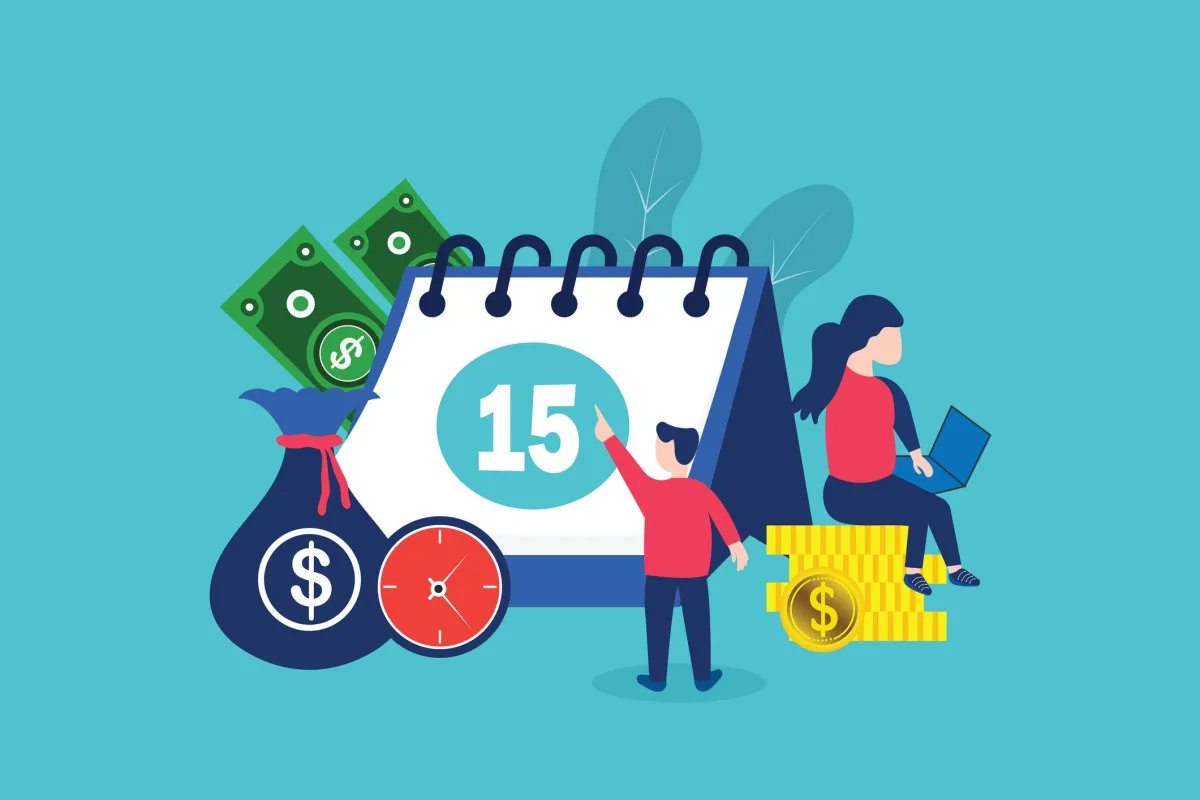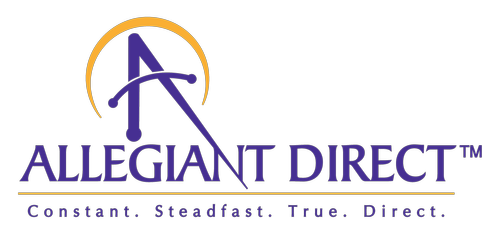The Allegiant Direct Blogs

Let's focus on Monthly Giving
By Mark Jacobson
Senior Consultant
Nobody’s expense budget is rising for direct response.
So how about focusing more on Monthly Giving?
MOVES MANAGEMENT IN ANNUAL GIVING: Part Three
Monthly giving is not a new concept. The basics are simple. Convincing our most loyal donors to make monthly gifts via debit or credit cards should always be a win-win proposition.
Donor ease advantages are at the core. Communicate how monthly, predictable revenues have an impact on your organization being able to save expenses and allocate higher percentages of gifts to programs. Predictable revenues allow you to plan how a challenge will be met.
Monthly giving is largely driven by online contact, even though it can be promoted in direct mail.
With more and more of us paying our monthly household expenses via digital tools, the precedent for ease of making charitable gifts online has already been set - long ago.
Some mature data sets continue to like to make gifts through the mail, whether it by check or debit/credit card.
This is a donor preference that must be respected. Even if that should qualify an otherwise solid monthly giving prospect.
What’s left is ...
Which among our donors are we best advised to seek monthly vs. incremental giving?
What are realistic expectations for goals in revenue growth, donor retention and lifetime values?
How should we keep our monthly donor engaged if they are not getting regular appeals?
Who are my best prospects for monthly giving?
Once I have converted my donor to monthly giving, what’s the next step in growing our relationship?
Which among our donors are we best advised to seek monthly vs. incremental giving?
Most donors who make commitments to non-profits other than emergency relief, childhood health crises and animal welfare non-profits, are those with whom a prior giving relationship has already been established.
For other organizations, the question becomes, “Which of our most loyal donors should we ask to convert their giving to monthly and how can I best build the case?”
The data for this is not uniform. However, most non-profits have success in advancing monthly giving in at least these data sets:
Recent donors with gifts of $100+ sent in a pattern over 3+ years and, at the same time, annually. in the last twelve-eighteen months in increments (minimally) of $35-50+,
Donors with three or more gifts in the last 24 months, with 2+ gifts in the past twelve-month period,
Donors with single gifts of $500+ (minimally) in the last twelve months with one or more additional gifts on record
New donors, prospects and lapsed donors are usually not fertile ground for monthly giving. But everything can be tested! Especially as the effort matures and as your giving “offer” is modified.
How much of an increase in annualized giving levels should I ask for when I ask for monthly commitments?
Conventional wisdom might suggest an initial program that seeks a monthly gift that equates to at least a 25% growth in annualized donor revenue. This increase can rise with donor gift levels.
A $100 donor might be asked to make a monthly commitment of $11/month. Assuming twelve debits are made, this donor’s annualized value is now $132.00.
A $500 donor may be asked to commit to $53/month. With twelve transactions, this donor’s value is now $636.
Adjustments can be made to more aggressive upgrades. These will need to increasingly focus on answering known/identified donor need/preferences and gift history maturity.
After at least twelve months of giving, you may want to test a special renewal appeal that builds a specific reason/case for an increase in the donor’s monthly increment.
How can I best promote Monthly Giving?
The most rapid advances in monthly giving are usually achieved via digital and website functions. Yes, direct mail can build the case, perhaps even secure a few commitments.
But clicking through links embedded in an email, website or social media is still the easiest – and most successful way – for donors to make any gift online – including monthly giving.
Include a monthly giving enrollment section in your mail direct appeals. Insert a QR code on the reply form that links to your website’s monthly giving page.
How should we keep our monthly donor engaged if they are not getting regular appeals?
Regularly remind your monthly donors how and why their ongoing support is having impact. Especially when you are not asking for additional support. Take the obvious clue about channel preference from donors who have made gifts and commitments online before mapping cultivation plans.
Maintain all points of contact, “friend-raising” and donor cultivation tools during the breadth of the monthly giving relationship. While monthly donors are typically removed from the renewal program file solicitation frequencies, maintain the ongoing attention and engagement of these donors.
Mistakes can easily be made when a newly committed monthly donor is taken altogether out of the mail mix.
Your results reports will show monthly donors with the most recent and frequent gifts.
But if you have not remained engaged with them, it’s likely been months since you have built the case for their ongoing support.
In overall direct response in 2025, this point could easily be identified as being close to “pre-lapsing.”
Overall, the recency of solicitation and subsequent gifting is one of the essential components of identifying those most likely to give again soon. But when removed altogether from a multiple appeal sequence, we are also removing the cause-and-effect process that allows you to sustain donor passion through the ongoing “building of the case.”
Many successful monthly giving programs include these donors in segmented versions of one or two special or emergency appeals throughout the year. These can be segmented and presented innocuously as an “FYI,” or positioned as an actual additional ask for a special reason that relates to identified donor need.
Many successful programs using this tactic show increases in monthly giving commitment retention, in addition to added revenues.
Lastly, be sure you have made provisions to securing updated credit/debit card information when cards expire.
This process is “manual” and will require your attention – and a “heads-up” to your donor.
Once I have converted and maintained my donor in monthly giving, what’s the next step in growing our relationship?
Most industry trends continue to affirm that an unexpectedly high percentage of previously unidentified, transformational planned gifts matriculate from mid-size previous donors vs. known and expected high yield sources.
Once your monthly giving program has matured and results solidified, long term monthly donors should be prime prospects for planned giving officer cultivation.
TO DISCUSS YOUR PROGRAM WITH ALLEGIANT DIRECT, CLICK HERE NOW:
BOOK A CALL
© 2025 Allegiant Direct, Inc.
Frequently asked questions
What kind of copy gets the best response for healthcare fundraising?
Mainly, copy that’s relevant, focused on the donor and non-institutional. Our experience is that it needs to be something related to heart or cancer and perhaps technology that does something better, keeps you out of the hospital and/or is less costly and less invasive. For children’s hospitals and hospices, patient stories usually work best, but appeals for new technology, equipment or programs can also work well.
Which is best - a window or closed face envelope?
We use both depending on the situation. A closed face envelope is a little more expensive. However, the #10 window envelope has been a workhorse for us for many decades. For hospital grateful patients, we think it may work because it approximates the look of a hospital bill. You can split test window vs. closed face, and sometimes you’ll find that a window does better, and sometimes a closed face works better. A closed face envelope has a more professionally looking business correspondence feel to it.
What about using a teaser on the outside envelope?
We usually come down on the side of not using teasers. The reason - if you put something on the envelope that gives the recipient an idea of what's inside, and they're not interested – like if they can tell it's a fundraising letter - then the trash can is always nearby. The problem with teasers is that most people who write teasers do not know how to tease properly. A teaser has to have some mystery to it. So, when you see it, you say, “What's this all about?” Having no teaser is its own mystery because you're wondering “why are these people writing me?” Then you want to find out and you open the envelope. We’ve used teasers in the past and tested them. Sometimes they work, and sometimes they don't. More often than not, they don't work. So, unless you've got a superb teaser, you may want to not use one at all.
Which lists work best for healthcare fundraising?
Most of our hospital clients solicit former patients, and they mostly work well. But if you’re a hospice, you have few numbers of bereaved individuals to solicit. By the same token, if you’re a children’s hospital, you have a minimum number of patients to contact. Parents of children’s hospital patients (the guarantors) are too young to be good philanthropic prospects. As a result, what we've found is that rented lists of donors to healthcare causes in your area often work better than patients. With hospices and children’s homes, you almost have no choice but to use rented names to build your donor base. Perhaps surprisingly, rented names tend to outperform hospital grateful patients. But why would a person who hasn't been in your hospital perform better than someone who has? With patients, we really only know two things about them. We know they're the correct age because we can select them based on age or date of birth from the patient record. We also know they've been in the hospital. But that’s it. We don't know anything else about them. But with a rented name, we know they're the right age because they've given to other nonprofit organizations. They’re definitely philanthropic. They’ve also given through the mail and are responsive to mail appeals. We also know they like to give, and particularly to healthcare causes. So that gives them an edge on former patients.
Book A Call
(FREE 30 minute consult)
To make your FREE consult appointment, select a date and click submit,
then you will be taken to a page to select the time. We look forward to chatting
with you! (If our calendar is not available, please refresh your page.)
Contact Us for More Information
For general inquiries or to receive additional information about our services, please write or call us.
Allegiant Direct, Inc.
278 Franklin Road, Suite 290
Brentwood, TN 37027
Still have questions?

Allegiant Direct, Inc.
278 Franklin Road, Suite 290
Brentwood, TN 37027
Marketing Systems Built By Be Known
We make no income or earnings claims - your results may vary.
We present testimonials and insights about other people’s experiences with our website for purposes of illustration only. The testimonials and examples used are of actual clients. They are not intended to represent or guarantee that current or future clients will achieve the same or similar results; rather, these testimonials represent what is possible for illustrative purposes only.
This site is not a part of the Google or Facebook website or Google/Facebook/Meta Inc. Additionally, this site is NOT endorsed by or affiliated with Google or Facebook in any way. GOOGLE and FACEBOOK are trademarks of GOOGLE, Inc. and FACEBOOK, Inc or Meta, Inc.


